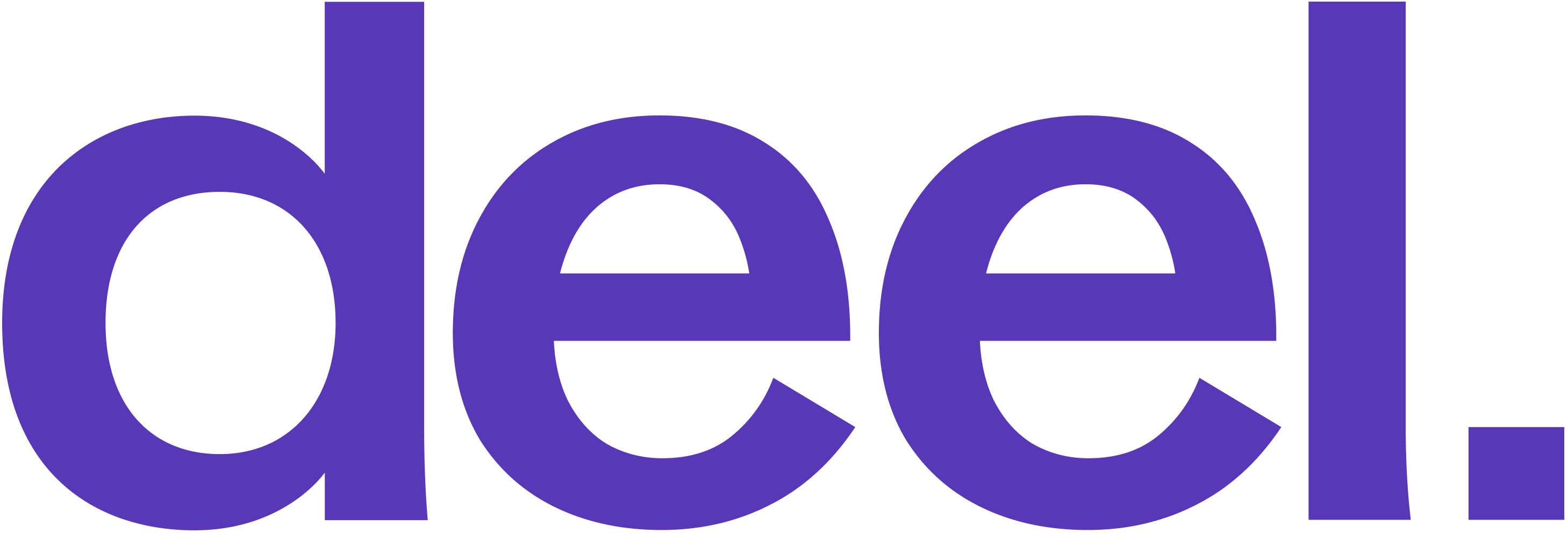Quality of Hire: How to Measure & Meaningfully Improve Through Top of Funnel Pipeline
30 minute read
From the Great Resignation to mass layoffs, the talent pool in recent years has gone from nearly dried up to overflowing with talent availability. This turbulent environment puts Quality of Hire (QoH) more into focus than ever before.
Looking at roughly 14M job applications hosted on Ashby, the number of applications per role skyrocketed — including a 207% increase in applications per business role from January 2021 to January 2024. In response, companies are placing a greater emphasis on ensuring they have the right assessments and processes in place that will lead to a quality hire.
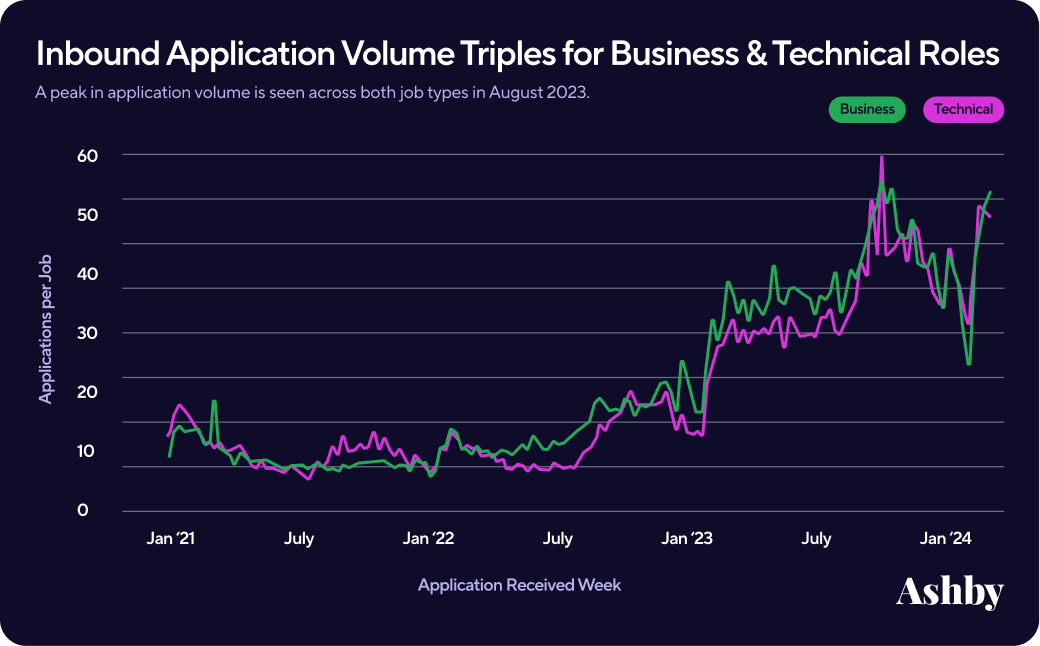
We recently launched a new Quality of Hire feature in Ashby. While we'll touch on that throughout this article, from my perspective, driving quality pipeline ultimately drives Quality of Hire. In this article, we’ll explore how to measure Quality of Hire, strategies for improving, and meaningful top of funnel channels to emphasize.
P.S. The above is a part of our ongoing release of recruiting metrics and benchmarks through our Talent Trends newsletter.
Defining Quality of Hire
At Ashby we define Quality of Hire as an early assessment of new hires, with the goal of helping talent teams improve recruiting processes and assessment during talent acquisition.
When people and recruiting teams discuss QoH, the conversation tends to focus on one of four areas across the recruiting funnel:
- Candidate Attraction
- Pre-Hire Assessment
- Interview Validation
- Measurement
We’ll touch on each before exploring the book ends, which is where I see the most meaningful impact being made and measured for long-term success.
1. Candidate Attraction
Attracting the highest quality applicant — someone who is qualified and aligned as closely as possible to your role — is (in my opinion), the biggest driver of Quality of Hire. It’s the place a hiring team can have continuous impact.
Candidate Attraction is one of the four competencies in our Hiring Excellence Framework. It’s where actions are taken to drive the quality of candidates into your pipeline in the first place, which can then be tracked through measurement scores, validation testing, or qualified by evaluation.
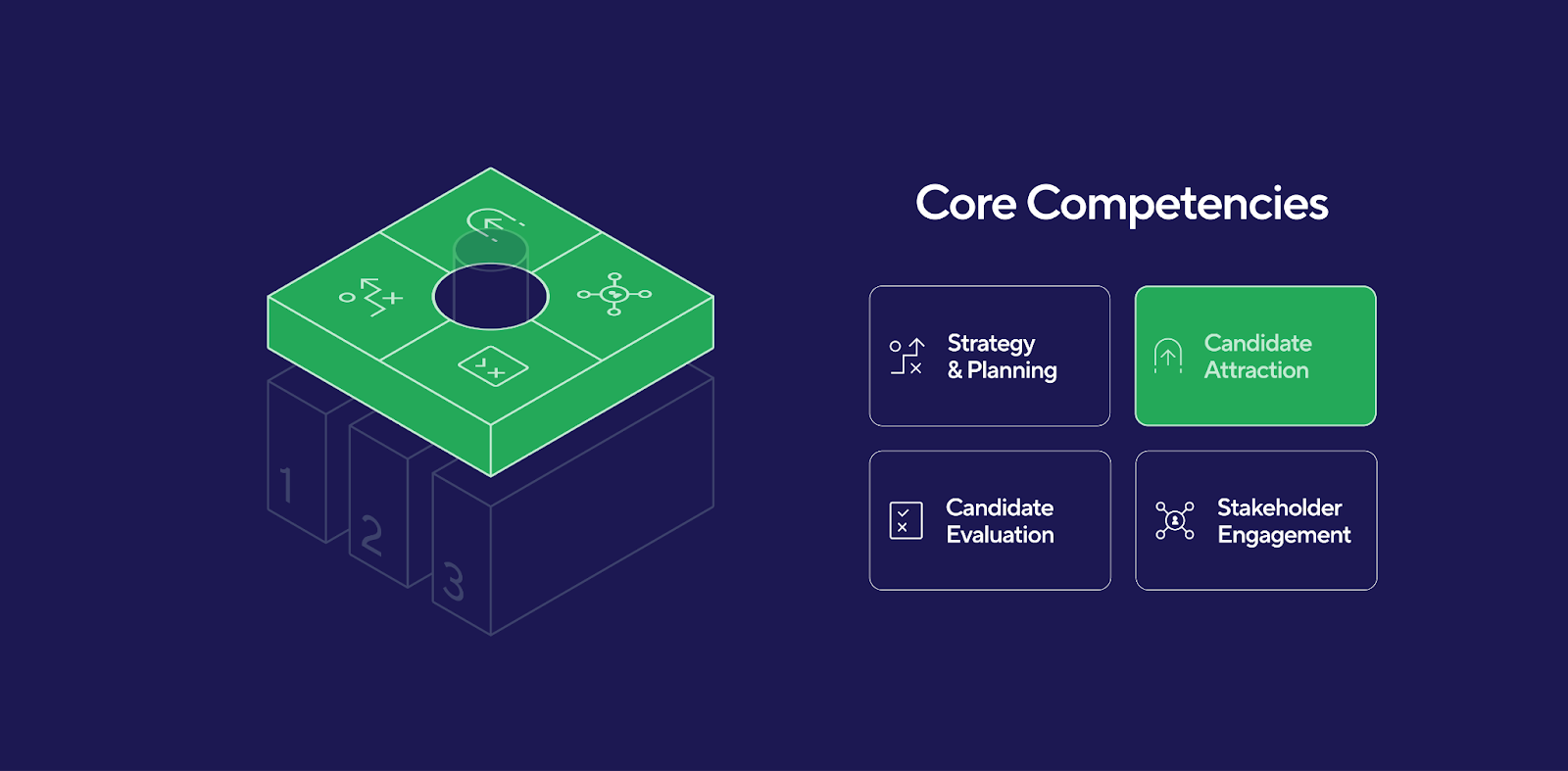
In the second half of this article, we’ll walk through channel strategies for improving the quality of candidates your company attracts.
2. Pre-Hire Assessment
Pre-hire assessment relates to the process and structure your company has to qualify, screen, interview, and determine who should be hired from an applicant pool. A combination of interview types from various employees will help you narrow down the pool to a small group of qualified potential hires.
P.S. Our aforementioned Hiring Excellence Framework helps touch on both validation and assessment in the Candidate Evaluation competency.
3. Interview Validation
Validating the quality of a hire generally comes towards the end of a hiring process, when either the interviewer or review committee assesses the quality of a candidate against the criteria of the job opening. It is both a subset of and natural progression in the interview process, coming in variety of forms:
- Bar raiser interview
- Founder interview
- Debrief huddle
- Offer review process
There are a myriad of methods here, and this article from Will Larson does a great job of discussing them.
For Ashby customers, Interview Plans help with this. There are three types of interview plans in Ashby: shared, custom, and grouped. Shared interview plans are templates that can be applied across multiple jobs, while custom interview plans are unique to specific jobs.
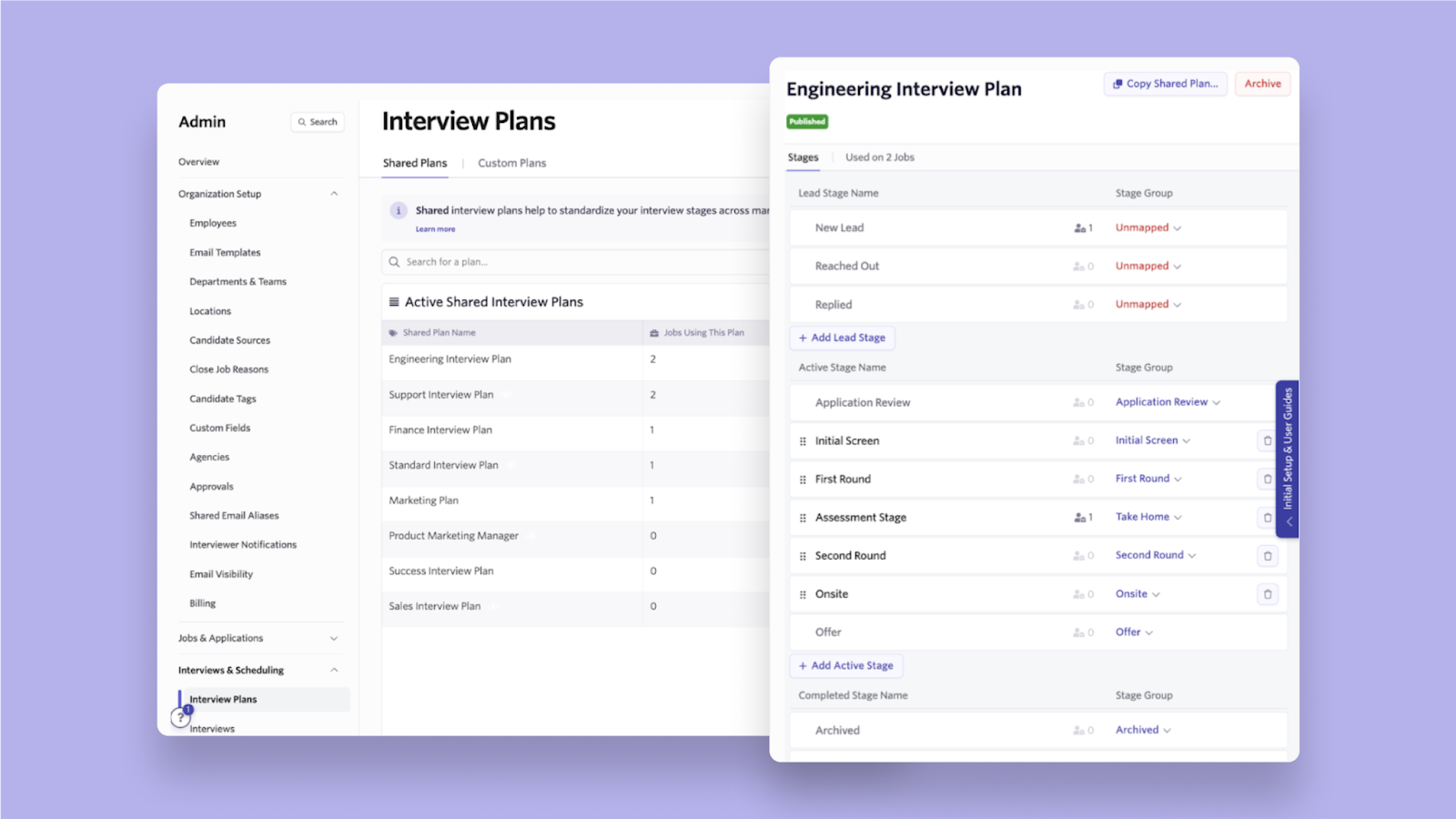
4. Measurement
Measuring Quality of Hire is generally a post-hire impact assessment achieved through surveys, performance metrics, attainment of KPI/OKR outcomes, or another measure of the return on investment from a hire. These measurements can be weeks to months after the hire date and rarely lead to a retrospective of that particular hire. Historically, they result in some loose feedback on what to do differently for the next hire.
We sought out an improved approach to measuring Quality of Hire that yields early feedback to improve your onboarding process and yield insights that help attract quality team members. We’ll explore this next.
How to Measure Quality of Hire
We promise no formulas in this section. In fact, let’s touch on the challenges with measurement before we share our thinking on it.
Challenges with Measuring Quality of Hire
Historically, Quality of Hire measurement has faced a number of challenges:
- The data is often spread across multiple systems (HRIS, ATS)
- Complicated formulas and inputs make it hard to get started or take meaningful action
- Lack of a clear owner for both the metric and its implementation
Together, these challenges make it difficult to sustain/maintain measurement that hiring teams can actually implement. I once spoke with a people leader who measured Quality of Hire by counting the number of promotions a hire has had in their first five years.
Not only does this definition have a number of flaws (varying tenures, promotion as one of a number of indicators, inconsistency in performance reviews over the years, relying on long-term success, etc), there’s no effective way for a hiring team to take meaningful action from this information.
An Actionable Approach to Measurement
Rather than spending extensive time on a complicated formula to learn and calculate at irregular intervals, Ashby believes in early assessments from the hiring manager during new employee onboarding. Through assessing new hires during their onboarding process, the intel collected can be used to improve your recruiting process in somewhat real time.
From what we’ve observed across people and recruiting teams, hiring manager satisfaction is often the strongest indicator of a new hire’s performance. Our QoH surveys are automatically sent to hiring managers on a configurable frequency — such as at 30, 60, and 90 day intervals. This not only assesses new hires during their initial onboarding with a company, but the results feed directly back to where your ATS data lives — which makes it essentially effortless to report not only on Quality of Hire, but on Quality of Hire amidst other trends.
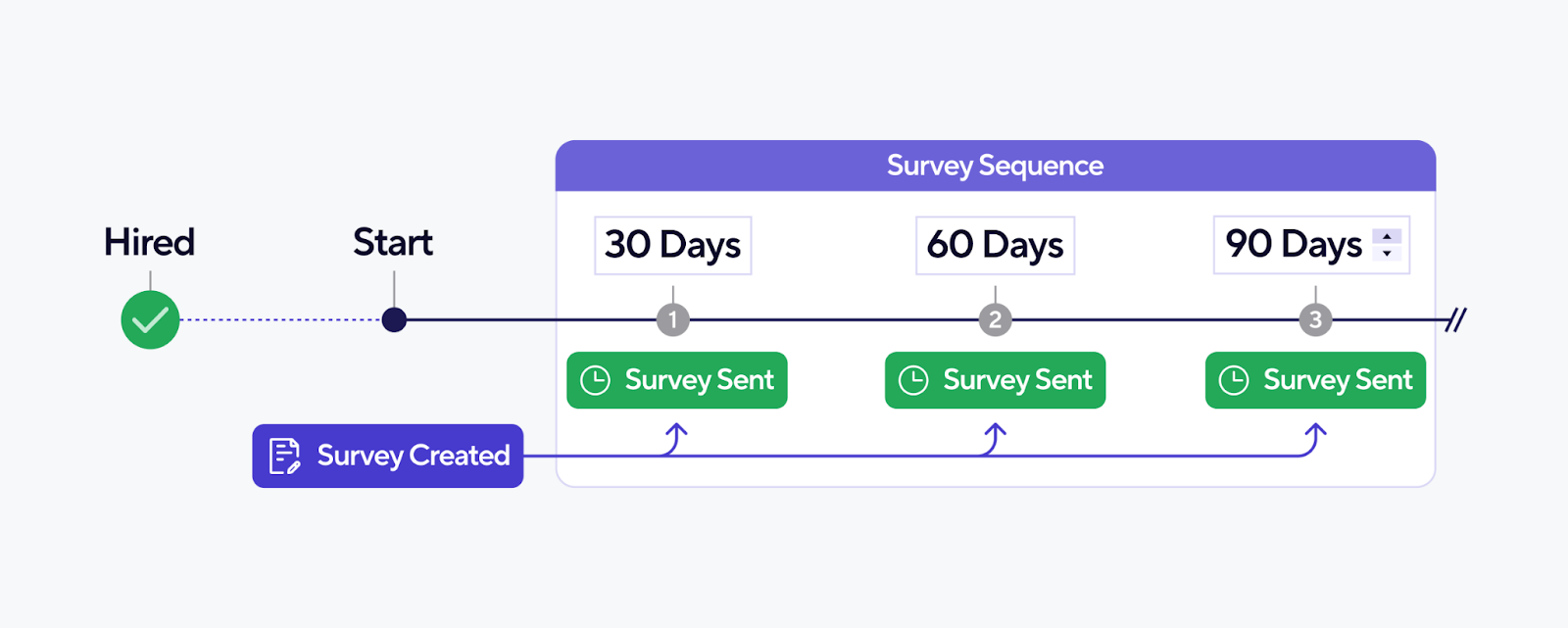
Just one example of what we mean by “actionable:” Consider a report that reveals how every low quality hire was rated highly from one interviewer at the company. This could signal a clear opportunity to recalibrate on what constitutes that score or provide training on how the organization should be assessing candidates.
Additionally if you have a consistent string of low Quality of Hire scores from a particular source (for example, a specific recruiting agency), it is a good opportunity to recalibrate with the agency or potentially remove them from your sourcing efforts.
With these types of insights automated, you can imagine how QoH data can then be used to lead planning initiatives for talent acquisition teams.
Configuring Quality of Hire Surveys
If you’re using Ashby, you can bookmark this resource. Otherwise, here are few tips to consider when configuring your surveys:
- Standardize Tenure Intervals: You want feedback to come at the same time intervals across all new hires. Having some hiring managers provide feedback at 60 days and others at 73 days can start to shake the consistency of feedback across candidates. You also want these intervals to be earlier in the new hire’s performance at your company versus after, let’s say, an employee’s first performance review.
- Build Surveys for Each Function: Rather than one survey where all employees across all departments are evaluated through, have a separate employee survey configured for each function. This allows more personalized and actionable feedback for Sales, Marketing, Product, and other functions to make use of through individual employee and department level trends.
- Simplify Your Quality of Hire Metric: While many recommend collecting a variety of Quality of Hire metrics, we believe the more complicated this becomes, the less likely you are to get consistent and reliable feedback — especially for hiring managers with multiple new hires a quarter. Consider a scale question coupled with 2-3 open ended questions for qualitative insight on top of the number scale response. A straightforward 1-5 scale will help signal if a new hire is below expectations, meeting expectations, or exceeding expectations.
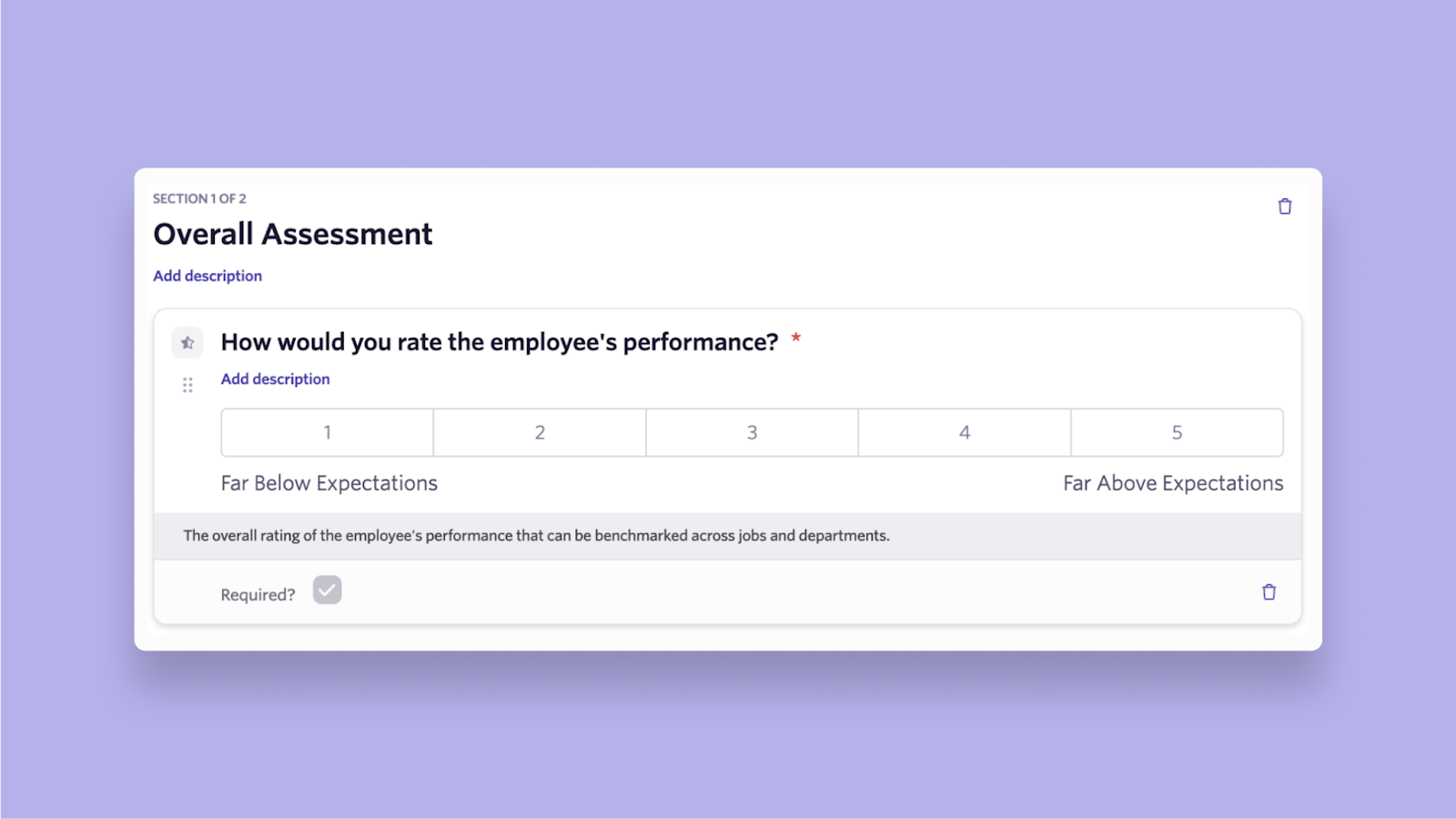
While we’re on the subject of surveys, we have some data-driven insights on designing Candidate Experience Surveys available as well. While different from employee surveys, candidate experience can play a part in driving improved employee retention rates — we’ll touch more on this in the next section.
Strategies to Improve QoH through Quality of Pipeline
As mentioned, I find the best way to improve the Quality of Hire metric for a company is investing in an approach that results in having a choice between several fantastic candidates.
Accuracy of hiring is a key contributor to Quality of Hire. Let’s discuss the two key elements for unlocking accuracy in hiring:
- Requisition qualification
- Talent team calibration
By doing a great job on both of these fronts, talent acquisition teams can attract a pipeline that is full of top talent and provide true optionality in the final hiring decision.
1. Requisition Qualification
A company’s job description is their primary method of describing and communicating the profile of the candidate they are trying to hire. The stakeholders and audience for that job description include the hiring manager, executives, interviewers, recruiters, referrers, and candidates.
Yet, many job applications follow a similar formula that makes it difficult for candidates to decipher if the role is actually a fit for them or not. When qualifying a job with a hiring manager, recruiters must draw out the key criteria that will enable your company to get a return on investment from the hire they’ll make.
In thinking through my own criteria, my mind returns to the framework outlined in Ken Blanchard’s book, Leadership and the One Minute Manager, where he talks about the capability of an individual to do a task as a combination of “competence” (their skills and knowledge) and “commitment” (their motivation and confidence).
The book’s example is task-based rather than job-based, but you can see how a quality hire would need both sides of this equation. In our context…
- Competency Indicators: What are the critical skills and knowledge that an individual must have to be competent at this job? This is likely straightforward as recruiters do this on a regular basis and translate it into job descriptions.
- Commitment Indicators: This is where I often find recruiters aren’t gathering the right information often enough. Shane Parrish said that “98% of success is consistently doing boring things that no one ever sees. 2% is visible and exciting, so that’s all everyone ever talks about.” An employee’s commitment is what gets them through the 98% of “boring” things that come with any role.
How do we actually translate commitment into a job description?
Job Description that Attract & Retain the Right New Hires
Too often, poor hires can be chalked up to “culture fit” or “turnover rate.” While we could go on a long tangent on those topics alone, finding the right new hires that results in positive employee retention starts on the job description itself.
First, determine why a great candidate would commit to this job. This is just as important in finding the right candidates as it is in avoiding attrition. The hiring manager should be able to explain why:
- a candidate would be motivated
- a high quality candidate would be confident in their ability to do the job
- they’d commit and be amazing in the role
My answer to showcasing all the above to a candidate? Tell them a story. Here are two narrative approaches to consider for your job description writing.
Example 1: Illustrate Success in Role
Try explaining: “What does success look like for a successful candidate in six months time?” in your job description. A competent candidate with the right skills and knowledge will read the statement of success and think: “I am confident, I can do that.” That should lead to, “that sounds like a motivating challenge,” where they signal commitment by applying.
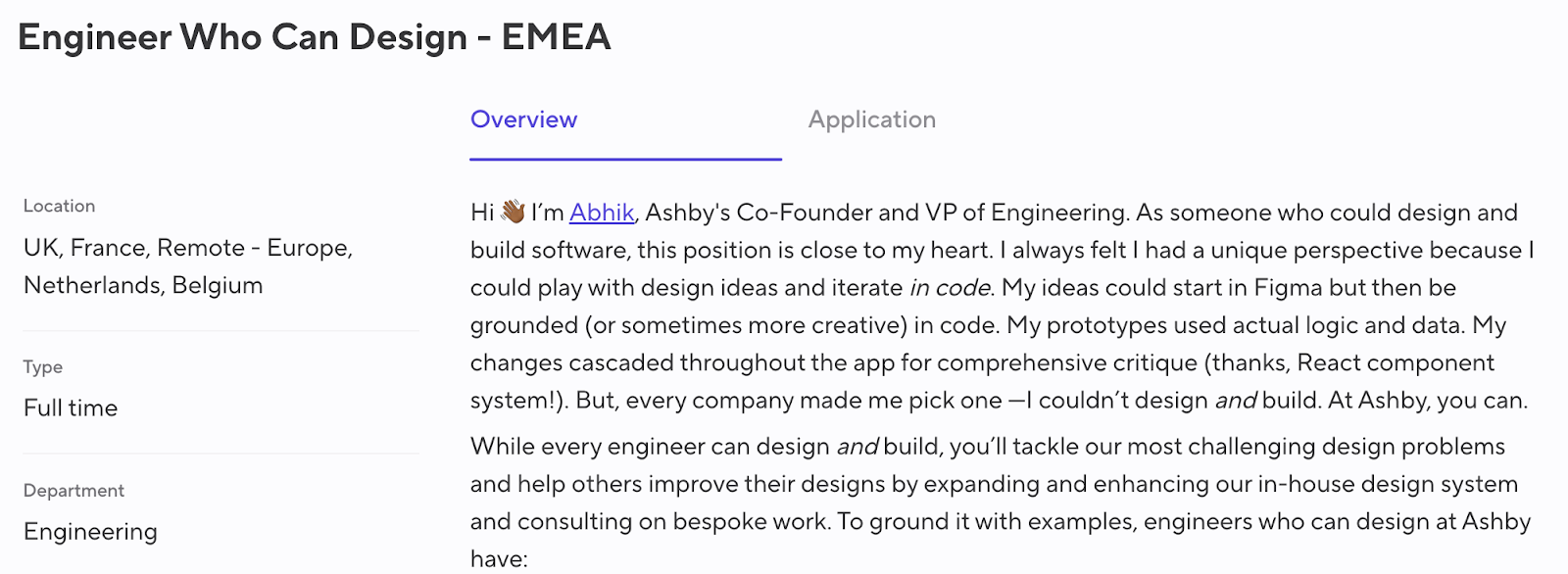
Example 2: Present a Case Study
Consider including a case study of some work already completed by an employee doing this role already (or has in the past). Include direct quotes from a high performing employee with a nice description of the challenge, situation, actions taken, and impact. This can inspire competent candidates to apply by understanding what the commitment entails, and some of these competent applicants will be the high quality candidates you aspire to hire.
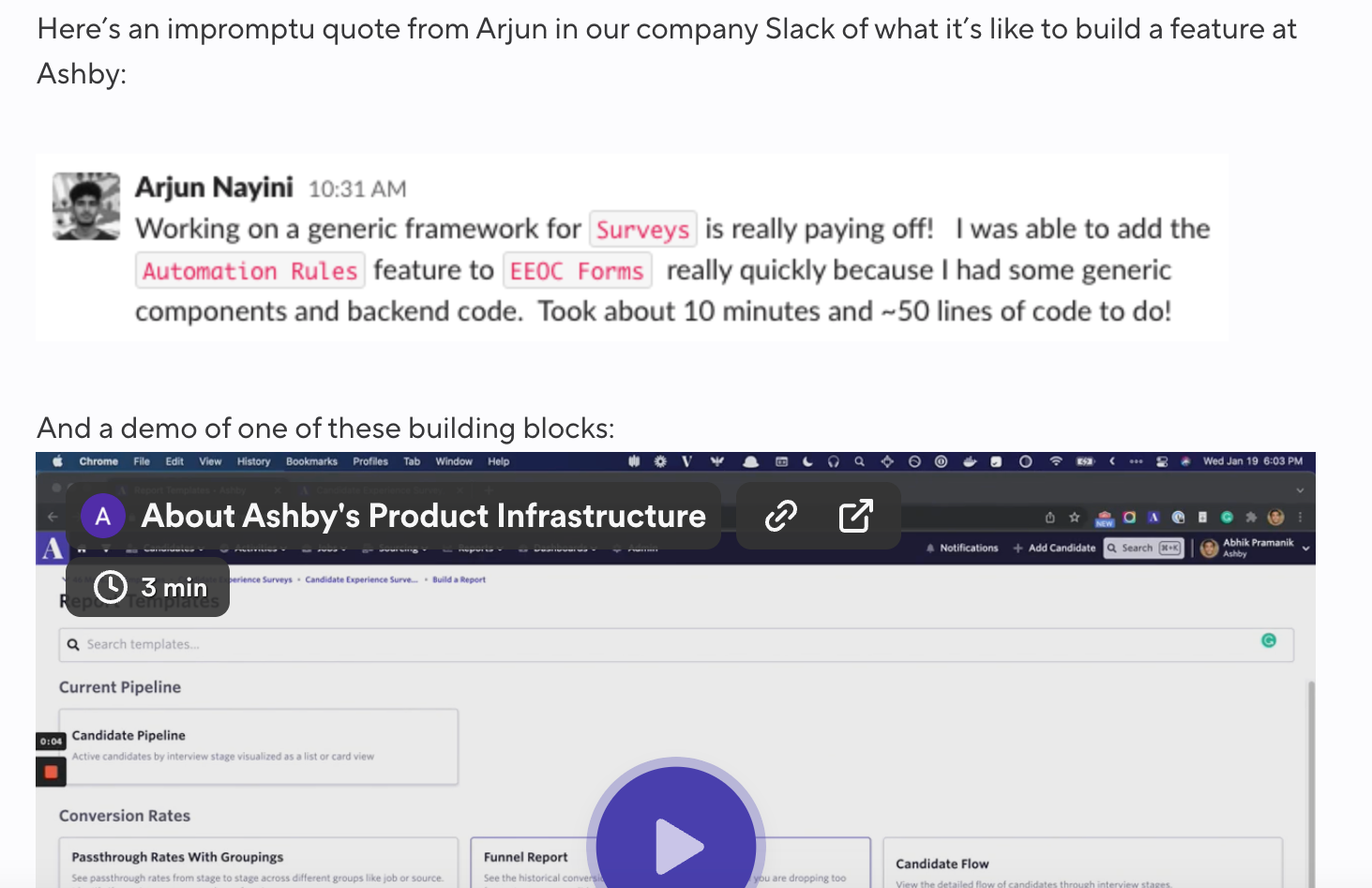
2. Talent Team Calibration
Calibrating a role is a key requirement for a recruiter to make higher quality hires. While all recruiters take the time to fully understand the role, more recruiters should also take the time to discover how a candidate may represent the skills and knowledge required to be at minimum “competent” in the job.
By understanding the varied way each skill or knowledge set might be represented, recruiters can more efficiently…
- recognize quality in a wider range of candidates
- represent them better in the recruitment process
- write clearer searches to find a range of candidates to do the job
How? Kick off the recruiting process with open questions to gain qualitative feedback from not only the hiring manager, but other employees with experience in the field you are hiring for. This helps build a broader picture of suitable profiles.
More often than not, though, I see recruiters starting their calibration exercise with a search based on obvious criteria followed by a presentation of the short list of profiles they’ve quickly found. This can be sometimes valuable; it also runs the risk of creating a bias caused by a singular view of the ideal profile that is then anchored on for the rest of the hiring process. This can even shift the dynamic where a hiring manager feels the need to take the wheel on finding potential fits.
Solve Quality of Hire Starts by Creating Strong Pipeline
All we’ve discussed so far becomes truly useful when we leverage hiring channels to create meaningful pipeline for your organization. For the remainder of the article, we’ll explore how to improve Quality of Hire through recruiting strategies at the top of the hiring funnel. We’ll specifically touch on:
- Internal Mobility
- Inbound/Outbound Applications
- Employee Referrals
- Sourcing Already Interested Candidates
Channel Strategy 1: Internal Mobility
Skills. Knowledge. Motivation. Confidence. The best way to align across all four is through existing employee engagement.
In other words, employees who already work (or have worked) for your company in a similar role are an excellent source of candidates already committed to your organization. They will know your product, customers, culture, quirks, and styles better than anyone. They’ve proven their dedication, will feel confident in their abilities, and can increase the ROI from any headcount through a faster ramp up time.
Building a culture of trust where your employees can see their future careers nurtured at your company will also increase the impact from your entire workforce. To drive quality hires internally, consider the following.
- Start building this cultural change by ensuring that every role gets posted on your internal careers page. This doesn’t require a formal recruitment process — simply ensure the openings are accessible and that each application is actioned appropriately. Be fair, give feedback, and enable conversations and growth opportunities. Internal employees will begin building a picture of their aspirational career within your company, see what skills they need to develop to qualify for a role they desire, and use it to map their own journeys.
- As the culture of internal hiring builds, you’ll find that your most complex, high impact roles are filled more often by internal candidates. This maximizes QoH in your hardest to fill spots. We’ve seen this perform incredibly well even in the earliest days of Ashby, so there’s never a size of organization too early to begin mobilizing internal hires.
- Even if an employee isn’t a fit, internal job postings also drive employee referrals. An employee who looks at a role posted internally may often think about who they know who could be a suited fit. In fact, ask that question on every internal post: “Do you know anyone who could be a fit for this role?” Employees who know the intricacies of a role will be more accurate in who they refer.
Channel Strategy 2: Inbound/Online Applications
As hinted at throughout this article, I believe the quality of your job description correlates directly with overall Quality of Hire. Most applicants (66% from studies I have done at previous companies) only look at a job title before choosing to apply for a role. Ensuring the job title is clear, accurate, and matches industry standards helps lead to some accuracy in applications.
-
The 33% who actually take the time to read the job description are likely to be of higher quality, and therefore be the ones worth writing a narrative requisite for. This is where you can attract the highest quality of application, not through the skills, requirements, and qualifications — those are table stakes — but instead through the storytelling that hooks into why a high quality applicant would be motivated and confident to apply. I’ve often heard people talk about how a candidate “should see themselves in the role” as being an aim of a job description. I see it slightly differently, where job descriptions enable candidates to “see themselves confidently enjoying the role.”
-
Search engine optimize (SEO) your job descriptions. Naturally, a job has to be found for a high quality applicant to apply. I think of SEO in recruiting as a reverse sourcing exercise for online recruiting channels. Put yourself in the mind of a perfect applicant for this role:
- What terms will they use to find their next job?
- What synonyms can you think of for those terms?
- Are they all in your job description?
- Are they embedded into your job description in a compelling way rather than shoehorned in?
-
Put reasonable limits on resume screening. For non-evergreen roles, post the job for a limited period of time — essentially just enough time for you to collect a sufficient volume of applications to feel comfortable that you’ll fill the role. Then, close it (I like to be transparent and share the closing date for the applications in the job description itself).
Now, the best way to pick the quality candidates from a pool is counter to the recruitment process I see many run. Hiring teams often begin by screening applicants as they come, fill up their calendar with a wide range of people who may or may not be a fit, and then never return to the remaining pool. This runs the risk of missing the best applicants — and often the 33% who are taking the time to read the complete details versus quickly submitting based on the role title alone.
While it’s tempting to start reviewing resumes, wait to screen resumes once the job is closed for applications. Then make two passes:
- First Pass: Use the objective requirement stated on the JD to reduce your pool by the greatest number. Rejecting all that don’t meet that criteria yields a much smaller and manageable candidate pool with a good idea of what great looks like.
- Second Pass: Use your remaining requirements to re-screen the remainder and create a short list of the very best candidates for your hiring manager to review or you to screen.
P.S. Ashby helps with this. Our ATS allows you to put multiple resume screen stages in a custom workflow. Request a demo to learn more.
Bonus Tip: Look beyond the resume to build talent intelligence. There’s a reason why the applicant you just reviewed applied for a job today — whether that be layoffs, poor financial results where they work, a terrible manager, a forced return to office, or a multitude of other reasons. Point is, whether or not the applicant is a great fit for the role, they’ve now signaled intelligence about potential willingness of their colleagues to make a change. Use the intelligence gained from their application (job titles, keywords, tech stack) to conduct some outreach and find the strongest of their peers. Maybe you realize the one who applied is the best fit, maybe you realize it’s one of their colleagues. Regardless, hire the best person for your role, not just the one who found the role.
Channel Strategy 3: Engage Employee for Referrals
Referrals from existing, high performing employees are often more confident and motivated candidates, courtesy of the extra context at their disposal. So what can you do to find more of the same? Data.
- In larger businesses, you can find patterns between referral and hiring behavior. For example, map the job titles of referrers to the title of the role their referrals were hired for. This helps target the employees who are more likely to know a quality fit. One pattern I’ve spotted at a past employer was that, no matter the country, 80% of the time the hired Head of Brand was a referral from a Head of Retail.
- When asking for referrals, talk to those in adjacent roles over those already in a similar role. Think marketers being referred by account executives or designers being referred by product managers. I’ve found that often, the best referrals come from those who have successfully worked with the type of role being hired for.
- And of course, do your own research before meeting an employee to ask for referrals. The session will be far more productive if you’ve already looked at their past companies and identified high quality prospects. Use the meeting to then validate your assessment of their suitability and focus on the best methods for engaging with such profiles. For example, would the best approach be for your colleague to reach out first?
Channel Strategy 4: Sourcing Already Interested Candidates
As discussed earlier, commitment through motivation and confidence are key factors in ultimate job performance. One area that impacts this strongly is affinity with your brand. Outside the company culture attraction, there are a couple of stand out methods to try.
The first is sourcing from past applicants. It feels like most sourcing activity today involves a leap straight on to LinkedIn. Instead, I like to run a keyword search in an existing resume database coupled with searches against tags that have been applied to candidate profiles. This can return top talent who have already signaled commitment in Ashby.
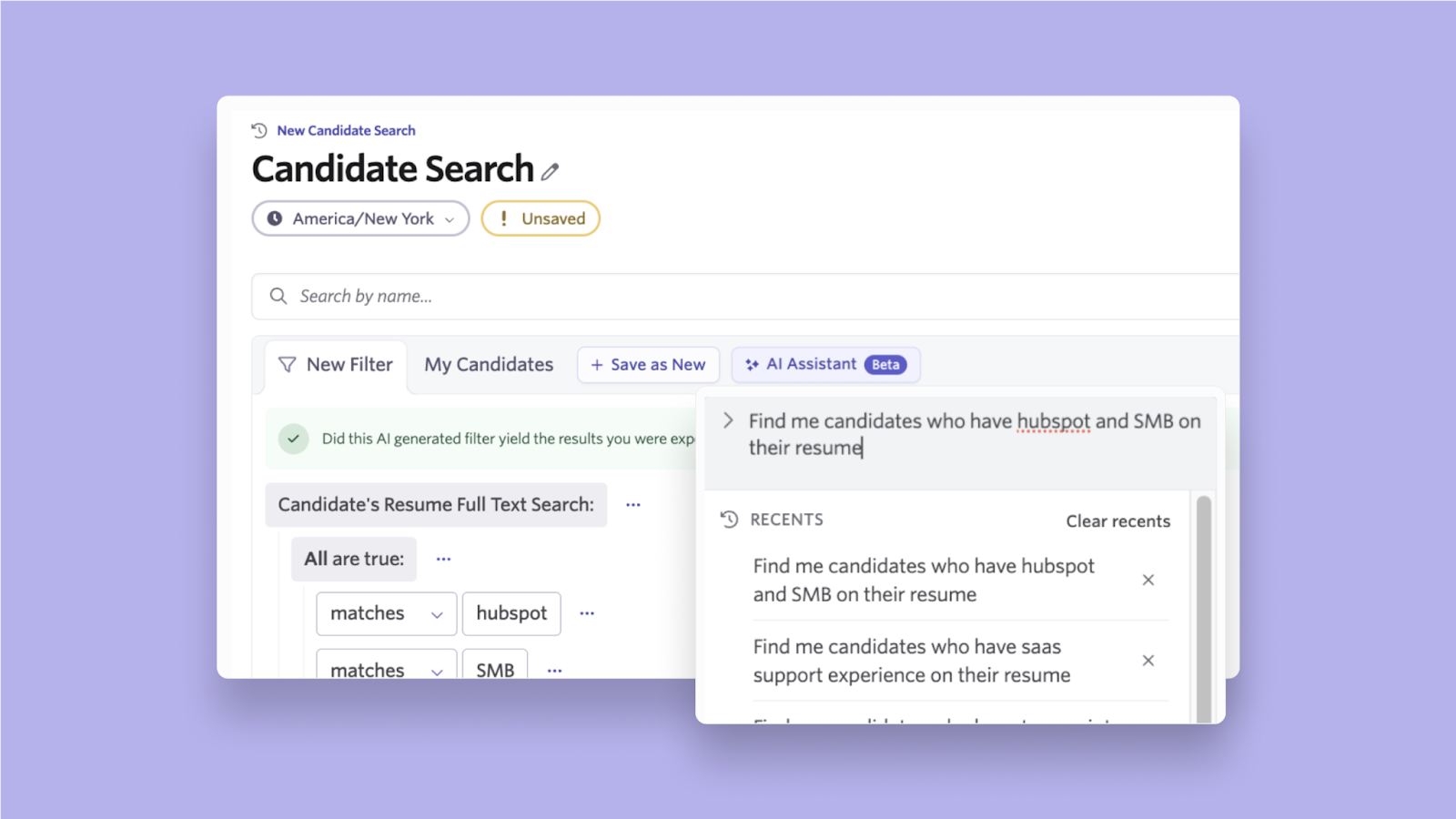
The second is LinkedIn company followers, who are clearly interested enough in your business to follow your journey. Using the advanced search “Company Follower” filter, LinkedIn Recruiter will identify existing followers who meet your search criteria. You can even take it one step further and create saved searches that combine the company follower filter with other filters, such as “open to work,” key skills, and others. That way, your daily alerts will have skills, followership, and availability — and yes, high quality candidates do use the #OpenToWork green profile sticker!
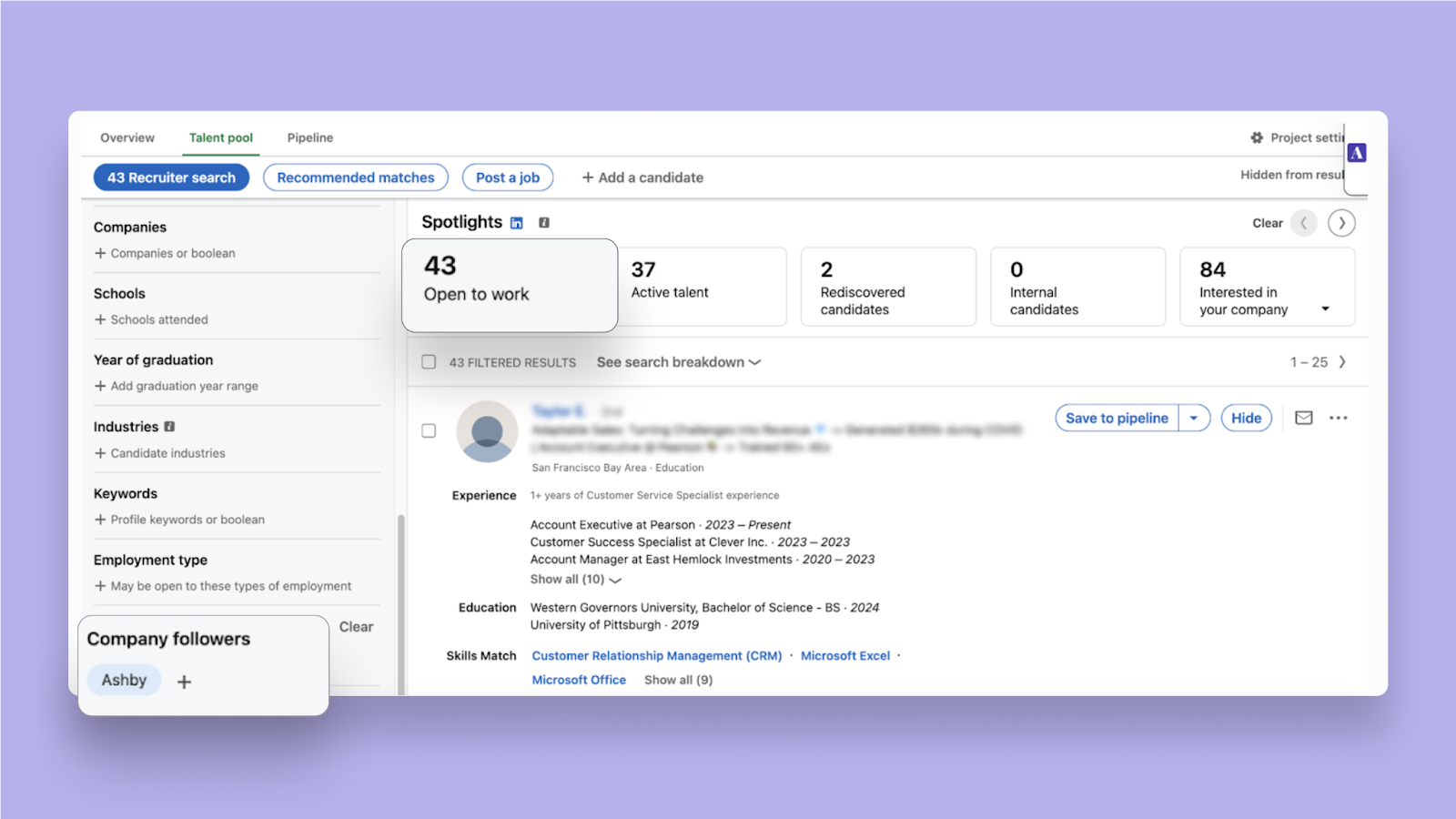
Quality of Hire Score — 1 of 7 Modern Recruiting Metrics
While I hope this article helped provide insight into attracting top performers and measuring quality candidates, Quality of Hire is ultimately one of the seven modern recruiting metrics we recommend every hiring team tracks. We detail each in the webinar below.
While Quality of Hire can often be seen as complex, we hope to bring simplicity to help continuously improve hiring processes. Request an Ashby demo today to see how we can help.

